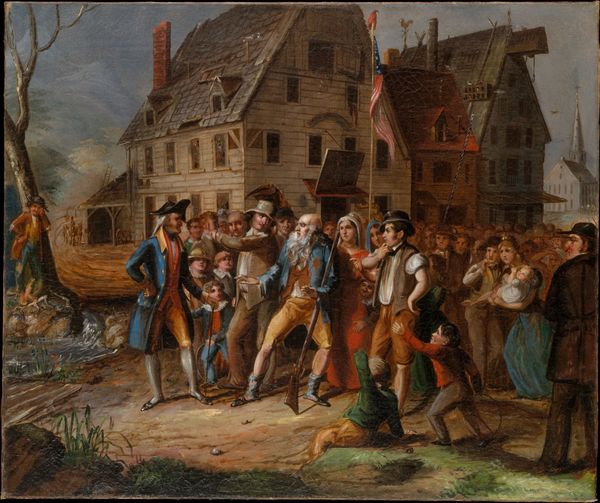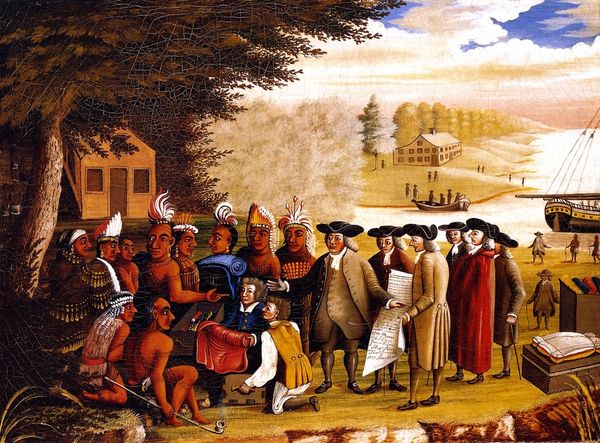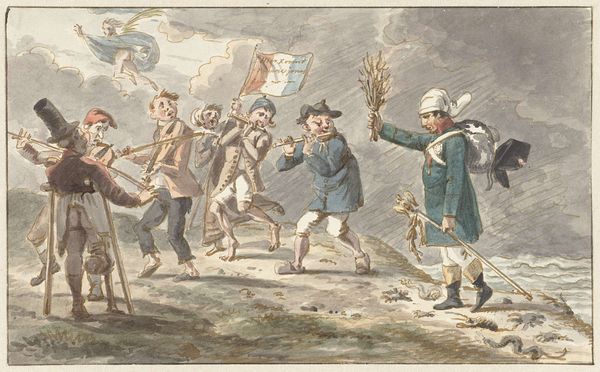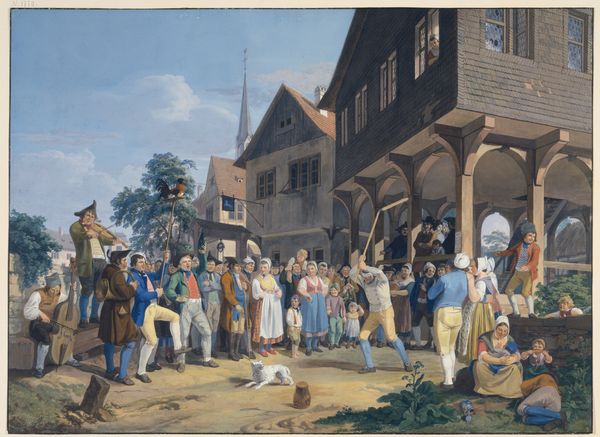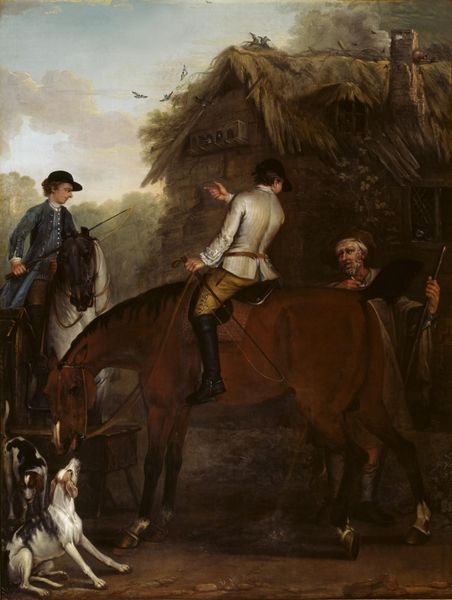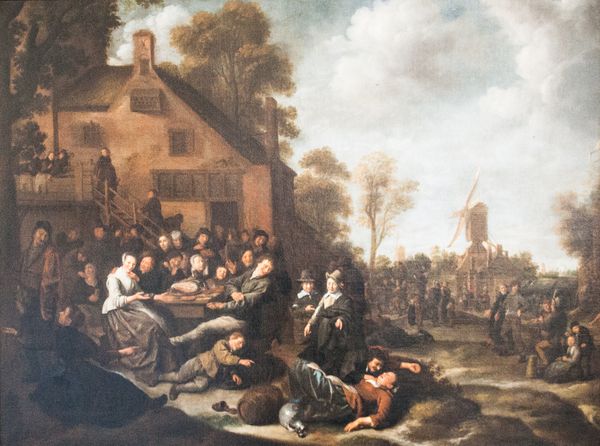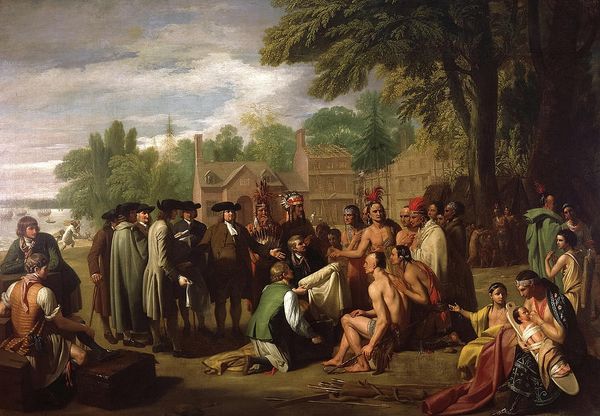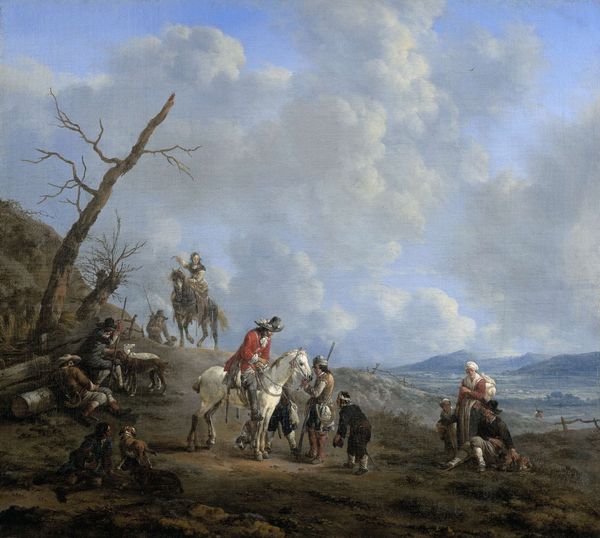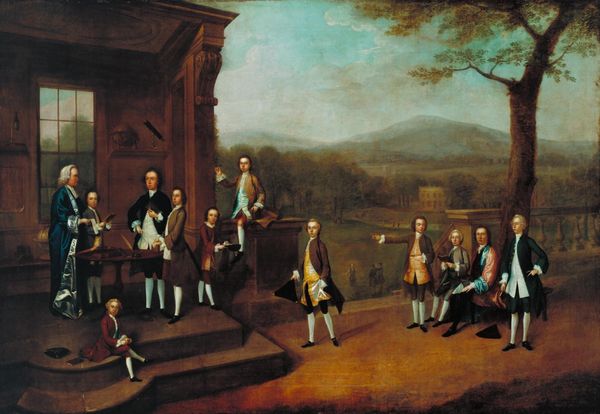
oil-paint
#
oil-paint
#
landscape
#
oil painting
#
romanticism
#
surrealism
#
hudson-river-school
#
genre-painting
#
history-painting
Copyright: Public domain
Curator: Standing before us is John Quidor’s "Rip Van Winkle," an oil painting created in 1829. The painting resides here at the Art Institute of Chicago. Editor: It strikes me as chaotic, but in a folksy, almost humorous way. All these people, with so many confused and surprised faces. There's something off-kilter but compelling in how the artist stages this moment of realization or perhaps even alienation. Curator: The painting illustrates Washington Irving's popular short story. Note how Quidor renders the narrative. The focus is on the altered state Rip is experiencing, reflecting the rapid political and social shifts occurring in the US. See the background compared to the colonial foreground—there are visual juxtapositions that underline Rip's bewildered sense of displacement. Editor: So, he's not just some sleepy guy, he’s become a symbol for the upheaval of tradition by, say, burgeoning democratic ideals? The very symbols around him are no longer the same and thus have no weight anymore? That kind of feeling… I think that resonates. Curator: Absolutely! Consider how Rip himself, and the men playing nine-pins in the background, draw on familiar iconography of folkloric characters, perhaps gnomes or wood spirits. Even his clothing implies an allegiance to an older order clashing against the newer fashions emerging post-revolution—there is tension embedded within Rip as a character. The cultural memory is palpable. Editor: That explains the initial sense of disarray. These disparate symbols and cultural fragments are wrestling within the same space. Quidor almost invites us to feel Rip’s vertigo in the face of historical transformation, presenting a before and after version of the nation itself. So much is told through spatial organization. Curator: Precisely. And even the somewhat flattened perspective enhances this stage-like quality, reminding us of art's role in constructing historical narratives, where some people are inevitably displaced or written out of the story altogether. Editor: Yes, looking again, the composition highlights exactly how individuals and their experiences are buffeted by socio-political winds, and that such transformation is not as simple as waking up from a nap. Curator: Indeed. Quidor presents us with not just a literary illustration, but a complex cultural and political commentary woven into a deceptively simple image. Editor: Well, now I'll carry that with me!
Comments
No comments
Be the first to comment and join the conversation on the ultimate creative platform.


